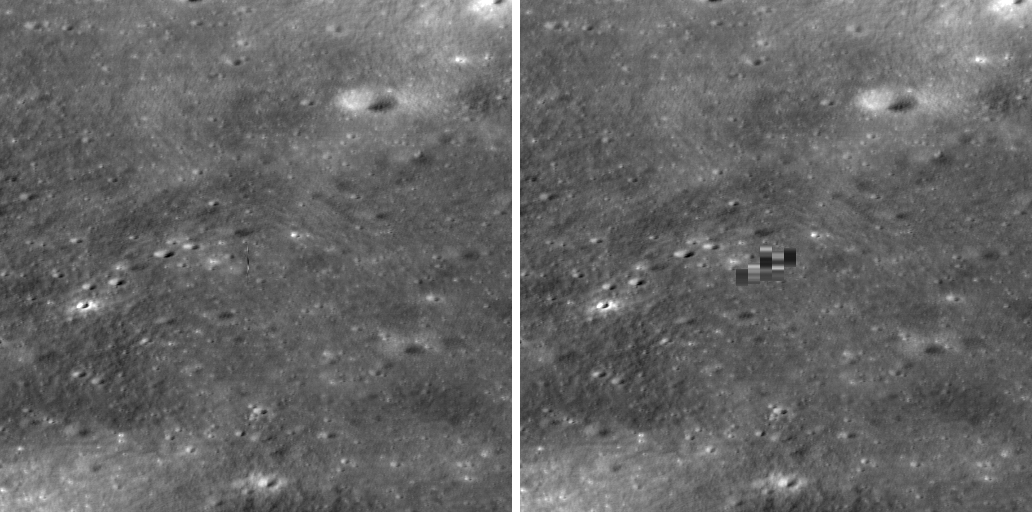
Three Danuri imaging opportunities on consecutive orbits occurred late on March 5th and into the early hours of March 6th. Due to the fast relative velocities (>3.2 kilometers per second), exquisite timing was required to point LROC to the right place at the right time. The flight paths of the two vehicles were nearly parallel but in opposite directions, resulting in extreme relative velocity. The LROC NAC exposure time was very short, only 0.338 milliseconds. But still, Danuri was smeared by a factor greater than 10x in the downtrack direction. As always, the talented LRO operations team at the NASA Goddard Space Flight Center enabled the LROC observations.



Below is the dramatic full NAC oblique (third image M1464323568LR) with Danuri near the center; the large bowl-shaped crater in the background is 12 kilometers in diameter [NASA/GSFC/Arizona State University].
An opposite encounter occurred last spring when the ShadowCam instrument captured an image of LRO as it passed beneath Danuri. ShadowCam was derived from the LROC NAC, the main difference being a much more sensitive detector that allows ShadowCam to acquire high-resolution images of permanently shadowed regions (PSRs). Malin Space Science Systems, San Diego, CA, designed and built the LROC suite and ShadowCam.
Related Featured Images
Published by Mark Robinson on 5 April 2024